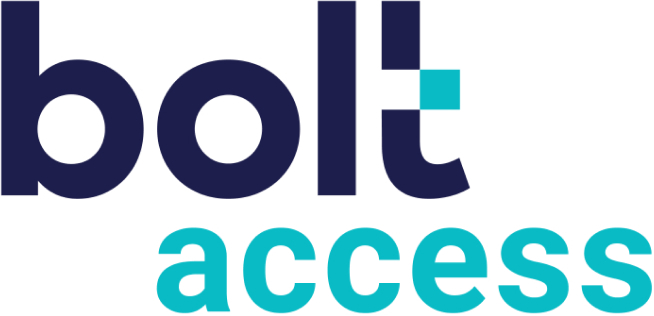Getting insurance customers to see beyond price and understand the true value of a policy is a major pain point for independent agents. Customers often see insurance as an obligation, so they go shopping for the lowest price and opt for the bare minimum. Geico and Progressive both sell that message, but a bargain policy might not really suit your customer’s needs.
So, how do you get someone whose instinct is to price shop and buy cheap rethink their shopping habits?
Use Value-Based Selling
The first step is to adjust your approach and concentrate on the value of insurance coverage rather than the price — a technique known as value-based selling.
“Value-based selling is the process of understanding and reinforcing the reasons why your offer is valuable to the purchaser,” explains Josh Kaufman, author of “The Personal MBA: Master the Art of Business.” By taking this approach with customers, you can increase the likelihood that they’ll buy coverage, even if it’s more expensive than those bargain policies.
A value-based approach is both a sales strategy as well as a state of mind. It’s about understanding your customer’s needs and offering a personalized solution. You need to ask relevant questions to determine exactly what a customer needs, come to a mutual agreement regarding the definition of “value,” and then provide them with optimal coverage.
Value-based selling requires that you develop your consultative skills. You need to go beyond merely explaining what’s offered in a policy and help customers make highly informed purchasing decisions based on what they have defined as value. Not only should this give them a better understanding of their options, it’s essential for building rapport.
Speak to a Customer’s Specific Concerns
The purpose of insurance coverage is to protect customers from risk in the event of a catastrophe and provide them with peace of mind in an uncertain world. Speaking to each person’s unique situation is vital for getting them on board so they see beyond just the price aspect and take the full value of coverage into consideration.
That means you need to figure out precisely what problems a customer has that you can help them solve.
If, for example, a person has experienced issues with flood damage before and is concerned with finding the right combination of homeowners and flood insurance to protect their property. You would want to focus on finding them comprehensive coverage that will reimburse them on everything from leaky plumbing systems to serious damage caused by flooding from natural disasters.
Or maybe they’re concerned with protecting high-value items such as expensive jewelry they’ve collected. You would probably want to suggest buying a rider in addition to homeowners insurance, as it will cover jewelry against damage, theft and in some cases mysterious disappearance.
Make Education a Key Part of Your Sales Pitch
Another component of effective value-based selling is acting as an educator rather than a salesperson. Your impact as an independent agent will likely be minimized if you’re always fixated on simply making a sale and nothing else.
However, when your emphasis is on educating your customers and helping them understand the ins and outs of the insurance buying process, it’s easier to build trust and become someone a customer will turn to when they’re ready to purchase coverage. This is especially important in the insurance industry, which is notoriously complicated with complex terms and jargon that many customers don’t understand.
Most people are turned off by aggressive sales tactics. It’s an outdated tactic and usually does more harm than good. Being pushy can potentially sour what might otherwise be fruitful, long-term relationships.
A better approach that many independent agents find helpful is playing the role of advisor. By making customer education an integral part of the sales process, you increase customer satisfaction, establish yourself as an expert and boost customer loyalty. This can also help establish your agency as a market leader where people will trust and respect you for your industry-specific knowledge, converting leads into customers.
In order to effectively educate insurance customers, you need to break down information in a way that it can be understood intuitively and use formats that customers naturally prefer, like brief videos and webinars as most people respond well to these types of visual mediums.
Show the Full Spectrum of Features and Benefits
Many insurance customers are naturally compelled to automatically go with the cheapest insurance option. So when you offer a slightly pricier yet more robust policy, it can trigger their skepticism. However, independent agents can often get past this by fully explaining all of the features and benefits that come with a particular insurance product.
“Features are product attributes or product aspects and capabilities,” explains marketing consultant Maria Trinza. “The key thing to know about features is that features are 100 percent focused on your product or service offering.” When explaining features, you’ll want to go into detail and highlight everything that will positively impact a customer’s life. Be clear about the extras they’ll get by purchasing more expensive coverage so that there’s no question as to the value it offers.
For example, homeowners insurance policy “A” may be cheaper but is fairly limited in terms of dwelling, personal property and liability coverage and doesn’t cover additional living expenses if a person is temporarily displaced while their home is being repaired. Policy “B” costs more but offers far more extensive coverage and will pay for a good chunk of additional living expenses if they’re displaced — something that could be appealing to many customers.
As for benefits, agents should use them to bridge the conversation and focus on exactly what the customer will gain from the features. This approach will typically provide greater customer satisfaction and peace of mind, knowing that their family and assets are robustly covered.
On top of that, it’s important to talk about how you’ll help with claims. “Explain the claims process and how your agency helps guide customers through it as smoothly as possible,” suggests John F. Carroll, founder and CEO of InsuranceSplash. “Use a specific example of how your process helped a previous client have a better experience.” Filing a claim after an accident is an incredibly stressful time for insurance customers. They want an agent to reduce their anxiety and not worsen it, so this is an excellent conversation to move the focus from price to value.
Focus on Value
You can’t blame insurance customers for wanting to pay less. Insurance is becoming increasingly expensive as homeowners insurance has risen by almost 50 percent in the last decade. As a result, many customers seek out the absolute bare minimum — a major obstacle independent agents must contend with.
Value-selling, which focuses on value rather than price, is one of the best strategies for getting customers out of this mindset and helping them see the big picture. Using the techniques outlined above should help you get the most out of value-based selling and persuade more of your customers to choose the best policy, even if it means paying a bit more.

